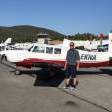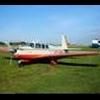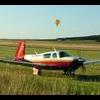Search the Community
Showing results for 'Autorouter'.
-
Hi, I am in the process of setting up my autorouter account. Does anyone have a M20F autorouter profile and would be willing to share it with me? Frank
-
In Europe, SkyDemon or Autorouter do W&B as well - but no takeoff performance. The above explained approach has the advantage of being available immediately before takeoff without fiddling in my smartphone, and the same immediately before landing (to determine optimal final approach speed). Works well for me.
-
@podair there should be an option to generate a sharing link once you have logged in to autorouter. @carusoam MS is amazing!
-
I use autorouter extensively, absolutely awesome product , let me check how I send my M20F profile over
-
Autorouter.aero is an IFR flight planning Tool that Basically does the complete ifr flight preparation for you. It submits an atc flight plan and provides you with an extensive briefing pack with plates, route and everything. In order for the flight plan to be correct, it needs to know the aircrafts performance date. Fuel burn, climb, descend, speeds, etc. now I could either enter these details myself which would take maybe 2hrs or I could at least get a starting point using an aircraft profile of someone who already did that job and just modify some basic data like empty weight etc I agree it’s a rather European or maybe even German thing, although planning capabilities cover whole Europe at least. seems like no european fellow mooniac uses it here though...
-
Hmmmmm... what’s an autorouter? I see this may be a Europe sort of thing... Give me a hint... I may be able to pass the request along or invite a Euro-Mooniac to join us here... Frank, Check our what some of our Euro-MSers have written about the autorouter... @Guillaume wrote some details there... https://mooneyspace.com/search/?q=Autorouter Best regards, -a-
-
I tried them out at autorouter.aero I think they did a great job, but wish they stuck to standard symbology (which I assume is ICAO blessed) rather than re-invent. But getting past that, I found the lack of database support much more lacking that what the article suggested, such as any ICAO airport identifiers should work. I had hard time finding any airport identifiers it would take till I just stuck to the biggest airports. I started with KSEE to KMMH and ended up having to use KSAN KLAX KRNO to come close and gave up using on any waypoints. Hope they supplement their aviation database to make it more useful. Thanks for sharing.
-
Combating Icing in General Aviation Aircraft BY SARAH ROVNER, MASTER CFI, CFII, MEI, ATP, OWNER OF FULLTHROTTLE AVIATION LLC January 2018 As winter weather reaches the majority of the United States, it brings a unique set of weather phenomena. The colder temperatures and frozen precipitation pose an exceptional threat to general aviation aircraft. Although general aviation aircraft range in size and capability to handle cold weather conditions, careful thought must go into planning when the threat of icing is present. As an international ferry pilot who has flown 115 different aircraft in 15 different countries and taken small aircraft across the North Atlantic to Europe, there are many tools and strategies that I have come to use that many general aviation pilots may benefit from. Icing poses risks to aircraft beyond the loss of control situations that pilots have read about in accident reports. Even small amounts of ice accumulation will degrade aircraft performance significantly. I’ve picked up small amounts of ice climbing through thin clouds, and even a minuscule amount of ice can equate to significant losses of airspeed which eats into fuel reserves. For North Atlantic crossings in most small aircraft, the longest legs are just shy of 700nm between Canada and Greenland, and then Greenland to Iceland. Most of the airplanes I’ve flown across have a range of just slightly more than that with reserves. Therefore, it’s absolutely critical that there is no ice accumulation or there is the risk of running out of fuel before reaching shore. Not all ice will sublimate. When ferrying a King Air across the North Atlantic, I picked up ice while climbing through clouds on the way to Iceland from Greenland. After waiting for the proper amount of ice accumulation, I engaged the de-ice boots but not all ice came off, nor did it come off completely evenly. Just that small accumulation caused a decrease in performance, but luckily the tailwind allowed the flight to continue with sufficient reserves. The ice didn’t come off for the entire 4-hour leg, with temperatures around -40°C (-40°F) at 25,000ft. The dangers of icing and its effect on performance are serious, and pilots should not anticipate that the ice they pick up on the climb will go away once they are clear of clouds. Although not all clouds will cause icing in winter, there is a high probability that a general aviation aircraft will begin to accumulate ice when the temperature drops to around 0°C (32°F) and there is visible moisture present. FAA Advisory Circular 91-74B1 discusses how clouds and visible moisture at temperatures below freezing are often mixed with frozen liquids (super cooled clouds) and ice particles. Ice accumulation is often greatest at temperatures just below freezing where there is a high quantity of liquid water content, and nearly negligible when the temperature is below about -20°C (-4 °F) as most clouds are made up entirely of ice particles. As the temperatures start to get colder, it is critical that pilots ensure they are staying within the operating limitations of their aircraft. Not all piston airplanes can handle the extreme cold, so pilots must consult their aircraft manufacturer for temperature limitations to include pre-heat and engine temperature limitations. Additionally, many general aviation airplanes equipped with TKS systems also have temperature limitations and a specific operating envelope where protection is effective. Ferrying small aircraft for long distances has little to do with flying itself – it’s all about planning. A great tool that many general aviation pilots are not aware of is the GRAMET, which is a graphical vertical flight path weather forecast based on the Global Forecast System. This tool combines prognostic charts, AIRMETS, SIGMETS, winds aloft tables, and many other tools into a graphical representation of weather along a specific flight path and altitude at a specific time. In many cases, pilots are not able to attain a temperature range suitable for operation in clouds due to altitude limitations, so the GRAMET is helpful to get an idea of where the clouds actually are in relation to their path in order to choose a path that would keep them clear of visible moisture in a dangerous temperature range. The Autorouter is a free tool that can generate a GRAMET for pilots by inputting their route and flight plan information, and can be found at:https://www.autorouter.aero.* Although the Autorouter is primarily for European pilots that look for route and flight planning tools, the tool does work for any ICAO airport. By selecting the GRAMET link on the upper right hand side (which does not require an account), a user can input their flight plan information, time and altitude and it will generate a GRAMET immediately. Since the tool is more geared toward Europe, not all North American fixes will be recognized but most airports should be. OGIMET is another tool that can be used to generate a GRAMET and it can be found at http://www.ogimet.com/home.phtml.en.* OGIMET is not as easy to use but it does provide the same data and even has an Android App (but not for iPhone). Icing poses a severe threat to aircraft and can significantly degrade performance and aircraft control. Avoiding icing conditions with a high probabiity of ice accumulation is important for the safe completion of any General Aviation flight. Proper pre-flight planning using all available information and tools is a very important part of icing avoidance. While enjoying the cooler temperatures this winter, make sure you are taking into account all aspects of winter weather while planning your flights. Fly safe this winter and remember that cold weather isn’t to be avoided completely; but it is to be respected. We’d love to know what you think of this PIREP. Please email us atPIREP@Avemco.com and let us know. Reprint by permission only. If you would like to obtain reprint requirements and request permission, please email us at PIREP@Avemco.com 1https://www.faa.gov/documentLibrary/media/Advisory_Circular/AC_91-74B.pdf
-
Most ATPL schools in France work that way. But as said earlier, pitch attitude will vary from aircraft to aircraft as ours ADI are almost never perfectly calibrated. But you need to know which speed / power settings to use for the various phase of flight. For the M20J I use : Climb : During climb, I only fly with IAS / Power. Vertical speed is only a consequence of IAS / Power : you shouldn't fly by using the VSI. Only monitor vertical speed unless ATC asks you otherwise. - 100 kts by default (max MP/ 2700 RPM). During warm summer days, I can increase IAS to 110 kts for cooling purposes. - 90 kts is best rate (Vy) @ 1243 kg (93 kts @ 1315 kg) @ sea level. I use this speed when ATC asks me to "expedite climb". - 66 kts is best angle (Vx) when obstacle clearance is a factor. Monitor closely oil temp / CHT when climbing at Vx. Cruise : During cruise : set your power setting and VSI to 0. I use 2500 RPM and 24 In.Hg (or max MP if max MP < 24). I lean usually lean 25 LOP. Descent : I tend to fly a fixed vertical speed of -500 fpm by default for my passengers ear comfort . Keep MP<24. Lean as required (don't set the mixture full rich as some school teach it !). Approach : I usually fly holds at 100 KIAS clean config. It's close enough to best glide speed (ie speed where you need the less power to keep flying) and it's on the "good side" of the power curve. For level flight 100 KIAS is about 14 in.Hg / 2500 RPM clean configuration. Lean as required. For a 3° final approach, you can keep 14 in.Hg / Max RPM, gear down, flaps 15°. It will give you 90-100 KIAS if there is no wind. To prepare your flights, I recommand you use this tool : https://www.autorouter.eu/ . It's free and amazingly powerfull. My M20J model is available with the sharing code "3724BJR".







